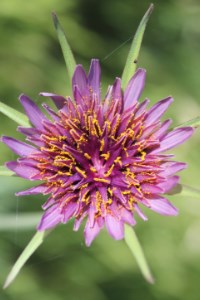
Deutschman Lab Projects
Many endangered and threatened species now live on small, isolated patches of protected habitat embedded in an urban landscape. Dispersal is perhaps the best known problem with isolated preserves. In addition to connectivity, management activities like fire suppression can also endanger native plants and animals. On the immediate coast, historic wildfire activity has been extremely rare due to the year-round presence of marine-related moisture and current fire suppression efforts. Empirical evidence shows that both shortened and lengthened fire return intervals can pose a threat to southern California shrublands. Shortened fire return intervals can lead to "immaturity risk" if another fire event occurs before the plants are able to develop a resilient root stock or a sufficient seedbank. Conversely, fire return intervals that are excessively long can threaten entire populations of obligate seeders with local extinction. This "senescent risk" exists if reduced seed production and loss of viability in the seedbank occur before the next fire cues germination.
This study will focus on the size and age distribution, population structure, and reproductive potential of the white coast ceanothus (Ceanothus verrucosus) at Cabrillo National Monument (CNM). CNM is a small isolated preserve at the tip of Point Loma in San Diego, CA and supports two plant communities, coastal sage scrub and maritime chaparral. As with other southern California shrublands, wildfire plays a crucial role for many of these species, but urban development and active fire suppression have prevented wildfires at CNM. Prescribed burns are not permitted and this complete absence of fire increases the risk of extinction for Ceanothus verrucosus, an obligate seeder that occurs at CNM. This study will aid in understanding the potential threat of extinction for this population and establish a time scale for implementing research studies and/or management strategies that may help the species persist.
Research Hypotheses
1. Assess the current population demographics and reproductive status of Ceanothus verrucosus within the boundaries of Cabrillo National Monument.
2. Estimate the relationship between stem size and age in order to determine the current age distribution of the population through field measurements.
3. Make population projections by building an age-specific model parameterized from my field data.
Lead Biologist: Andrew Smith
Current and Projected Population Demographics of Ceanothus verrucosus at Cabrillo National Monument, San Diego, California
